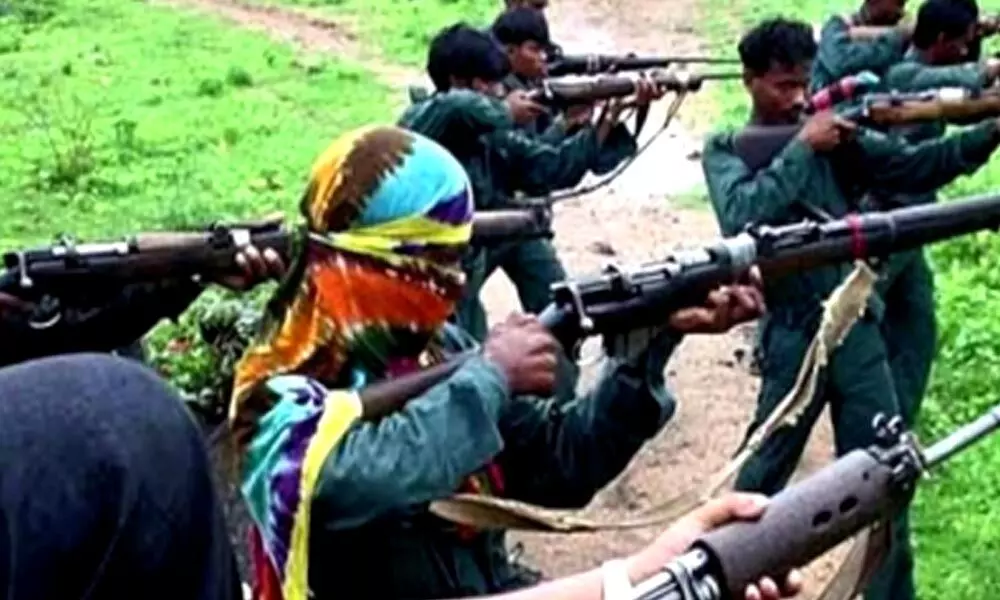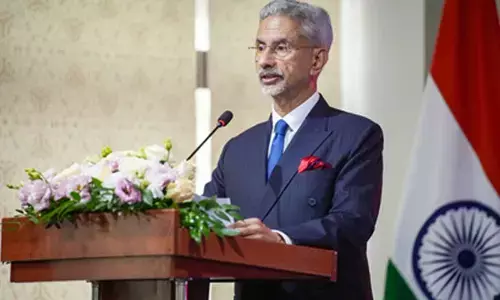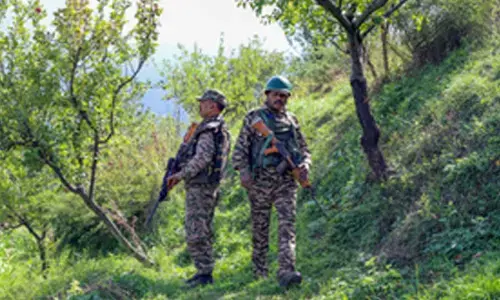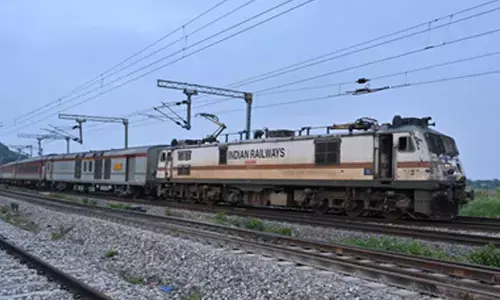Firm action & development interventions lead to shrinking Maoist footprints

Firm action & development interventions lead to shrinking Maoist footprints (Photo/IANS)
A multi-pronged strategy involving security measures, development interventions and ensuring the rights and entitlements of local communities has led to the shrinking of the Maoist influence in the country.
New Delhi: A multi-pronged strategy involving security measures, development interventions and ensuring the rights and entitlements of local communities has led to the shrinking of the Maoist influence in the country.
Union Home Ministry officials said that the steadfast implementation of the 'National Policy & Action Plan to address Left Wing Extremism (LWE) - 2015' has resulted in a consistent decline in violence especially in the so called 'Red Corridor' region in the eastern, central and the southern parts of India where the insurgency had the strongest presence.
The officials said that incidents of Left Wing Extremism (LWE) violence have reduced by 77 percent from the all time high of 2258 in 2009 to 509 in 2021. Similarly, the deaths of civilians and security forces have reduced by 85 percent from 1005 in 2010 to 147 in 2021.
According to the MHA data of the last three years on the security personnel deaths in 2019, one death was reported in Bihar, 22 in Chhattisgarh, 12 in Jharkhand, 16 in Maharashtra and one in Odisha while in 2020, 36 casualties were reported in Chhattisgarh, one in Jharkhand, three in Maharashtra, two in Odisha and one in Telanagana.
Similarly, in 2021, 45 security personnel were killed, five in Jharkhand while no casualty was reported in Bihar, Maharashtra, Odisha and Telangana.
The geographical spread of the violence has also reduced and only 46 districts reported LWE related violence in 2021 as compared to 96 districts in 2010, the Ministry said in a report.
The shrinking footprint of the Maoists is also reflected in the reduced number districts covered under the Security Related Expenditure (SRE) Scheme. Under this scheme, the Centre bears 100 percent expenditure on security related issues such as creating infrastructure, setting up police stations and buying arms and ammunition and police vehicles.
A senior official in the security set up said that the number of SRE districts was reduced from 126 to 90 in April 2018 and further to 70 in July 2021.
According to the MHA data, as of now 70 SRE districts are located in 10 states -- five in Andhra Pradesh, 10 in Bihar, 14 in Chhattisgarh, 16 in Jharkhand, three in Madhya Pradesh, two in Maharashtra, 10 in Odisha, six in Telangana, one in West Bengal and three in Kerala.
Similarly, the number of districts accounting for approximately 90 percent of the LWE violence, categorised as Most LWE Affected Districts, came down to 30 from 35 in 2018 and further to 25 in 2021.
The Union Home Ministry has also reiterated that as per the Seventh Schedule of the Constitution, the subjects of 'Police and Public Order' are with the state governments. However, to address the LWE menace holistically, a National Policy and Action Plan was launched in 2015 to address LWE which envisages a multi-pronged strategy involving security related measures, development interventions and ensuring the rights and entitlements of local communities.
On the security front, the MHA has supported the LWE affected state governments by providing Central Armed Police Forces battalions, helicopters, training, funds for modernisation of state police forces, arms and equipment, sharing of intelligence, construction of 'Fortified Police Stations' etc.
It has also provided funds for capacity building of the LWE affected states under various schemes, like SRE Scheme and Special Infrastructure Scheme (SIS) which was approved in 2017 to fight the LWE menace effectively.
Under SIS, projects worth Rs 371 crores have been sanctioned for strengthening the Special Forces (SF) and the Special Intelligence Branches (SIB) for LWE operations and 250 Fortified Police Stations costing Rs 620 crore in the vulnerable LWE affected areas.
Under the SRE scheme, Rs 2259 crore have been released to the states since 2014-15 while on the development front, the central government has taken several specific initiatives in the LWE affected states. A special thrust has been given to the expansion of the road network, improving telecommunication connectivity, skill development and financial inclusion.
Under the Road Requirement Plan-I and Road Connectivity Project, more than 10,300 km roads have already been constructed in LWE affected areas under the specific schemes. A total of 2343 mobile towers were installed under Phase-I and work order has been issued for 2542 towers under Phase-II of the Mobile Connectivity Project for the LWE affected areas.
Similarly, Rs 3078 crore has been released to the Most LWE Affected Districts under the scheme 'Special Central Assistance (SCA)' to fill the critical gaps in public infrastructure and services. Special focus has been placed on Skill Development and Entrepreneurship of the youth in these areas.
"Under this scheme, 47 ITIs and 68 Skill Development Centres (SDC) have been approved under 'Skill Development Scheme in 47 Districts affected by LWE," said officials in the Home Ministry.
The Central government has launched many initiatives for the financial inclusion of the local populace in these areas -- 1236 nationalised bank branches were opened and 1077 ATMs were installed while 14,230 'Banking Correspondents' were made functional in the 'Most LWE Affected Districts' in the last six years, the officials said.
They added that as many as 4903 Post Offices have been approved for the LWE affected areas in the last five years, of which, 3053 have been made functional.
Apart from the specific schemes for the LWE affected areas, the MHA works in close coordination with the other Ministries for optimum implementation of the flagship schemes of those Ministries in LWE affected areas, the officials added.


















